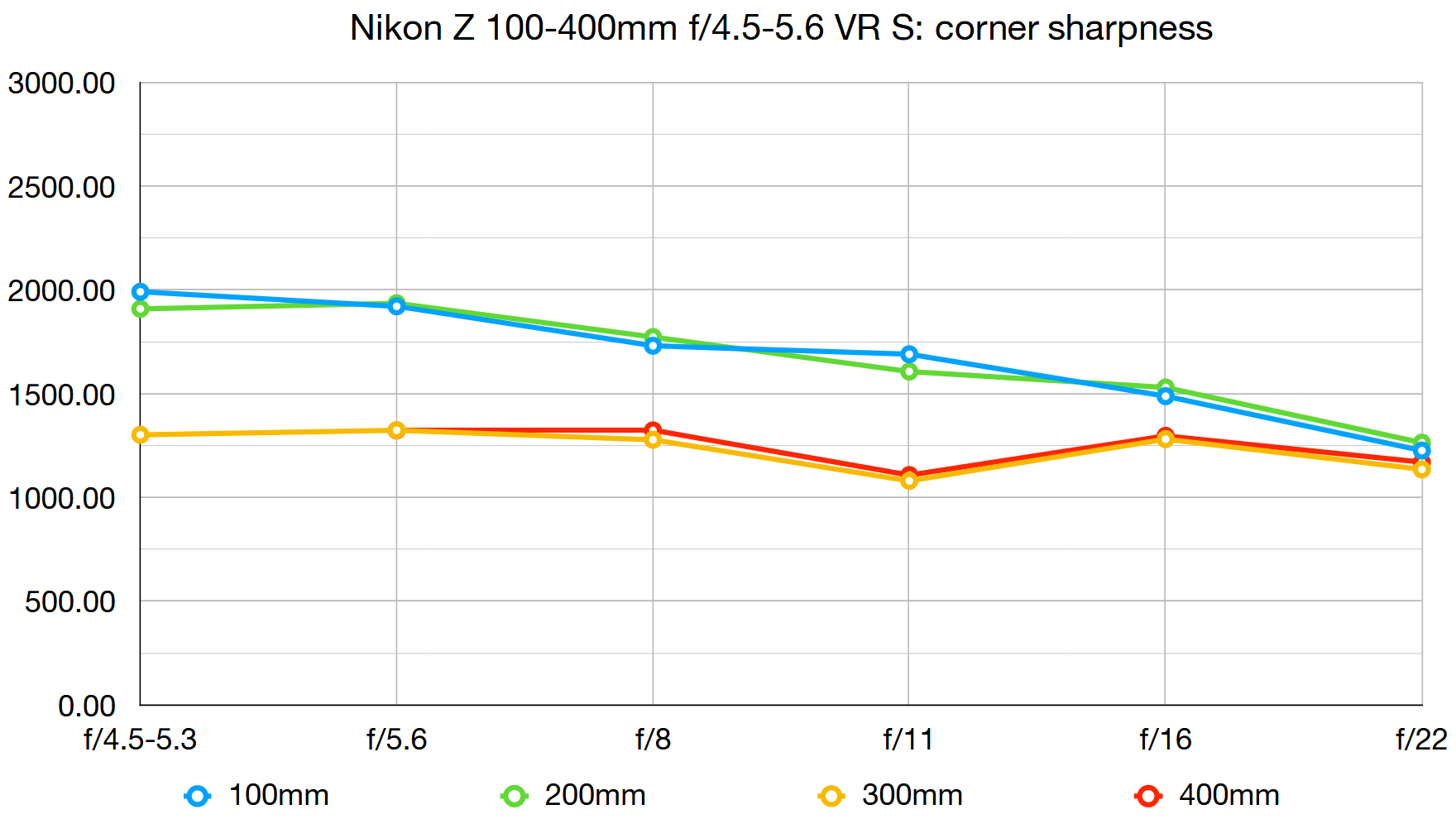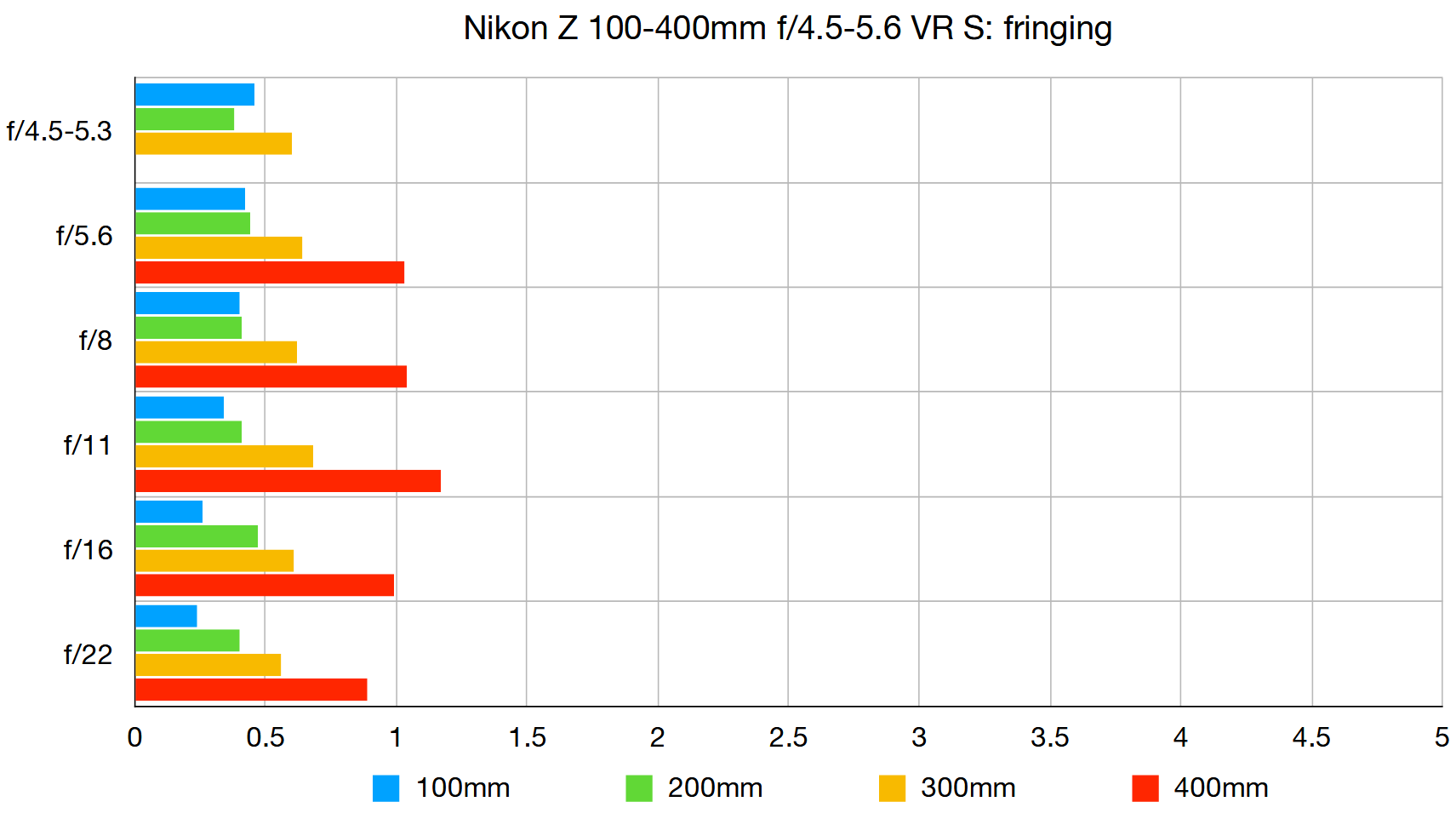Digital Camera World Verdict
It’s been a long wait, but the Z 100-400mm VR S finally brings a super-telephoto lens to Nikon’s Z-mount stable. And it’s a lens that’s certainly been worth the wait, bristling with technology and handling exotica, and delivering first-rate performance in all respects. It’s a weighty lens with a hefty price tag, but a worthy Z-mount successor to the ageing Nikon AF-S 80-400mm f/4.5-5.6G ED VR lens, launched back in 2013 with DSLRs in mind.
Pros
- +
Superb image quality
- +
Fast autofocus and 5.5-stop VR
- +
Compatible with Z tele-converters
Cons
- -
Large, weighty construction
- -
Stiff hood with our review sample
- -
Pricey to buy
Why you can trust Digital Camera World
The Z 100-400mm VR S is the first super-telephoto lens in Nikon’s Z-mount line-up. Naturally, if you shoot with a DSLR or have an FTZ/FTZ II mount adapter for your Z-series camera, you’re spoilt for choice when it comes to super-tele prime and zoom lenses.
There’s a feast of up-market, own-brand Nikon glassware to choose from, as well as both high-performance and compact options from Sigma and Tamron. From Sigma, the 100-400mm F5-6.3 DG OS HSM Contemporary, 150-600mm F5-6.3 DG OS HSM Contemporary and 150-600mm F5-6.3 DG OS HSM Sports are particularly strong competitors. There’s also the Tamron 100-400mm F4.5-6.3 Di VC USD and SP 150-600mm F5-6.3 Di VC USD G2, although firmware updates might be needed. The original version of Tamron’s 150-600mm requires a service center upgrade and, even then, optical stabilization is unavailable.
The upshot is that the Z 100-400mm lacks the extreme telephoto reach of independent 100-600mm F-mount lenses, or Nikon’s own AF-S 200-500mm f/5.6E ED VR, and is considerably weightier than Sigma and Tamron 100-400mm zooms. However, the native Z lens has a fully professional look and feel, along with build quality and performance to match.
Specifications
Mount: Nikon Z
Lens construction: 25 elements in 20 groups
Angle of view: 24-6 degrees
Diaphragm blades: 9
Minimum aperture: f/32-40
Minimum focusing distance: 0.75-0.98m
Maximum magnification ratio: 0.38x
Filter size: 77mm
Dimensions: 98x222mm
Weight: 1,355g (1,435g with tripod collar)
Key features
About the same size and weight as Nikon’s fully pro-grade Z 70-200mm f/2.8 VR S ‘trinity’ zoom, the 100-400mm naturally delivers twice the maximum focal length, but with a narrowing of aperture rating, which varies from f/4.5 to f/5.6 as you extend through the zoom range.
There’s a strong argument for buying the 70-200mm and just using a Nikon Z 1.4x or 2x tele-converter when you need the extra reach. This gives you the option of a ‘faster’ 70-200mm f/2.8 zoom as part of the package, made more attractive by it being such a spectacular lens, and that image equality and all-round performance remain so good when using it with a tele-converter. Pricewise, there’s little difference between the two lenses in some world regions, whereas the 100-400mm is more expensive in others.
Getting back to key features, highlights include top-notch glass with six ED (Extra-low Dispersion) elements and two Super ED elements. ARNEO and Nano Crystal Coat are on hand to minimize ghosting and flare, and the lens features a telephoto-friendly 5.5-stop optical VR (Vibration Reduction) system. Like the 70-200mm lens, the 100-400mm is also compatible with Nikon’s Z 1.4x and 2x tele-converters, although you’ll have to live with a narrowing of aperture rating at the long end of the zoom range to f/8 or f/11, respectively.
Build and handling
Weighing in at 1,435g (with tripod collar attached), the Z 100-400mm VR S certainly feels a purposeful lens, although it’s a little lighter than its 80-400mm F-mount counterpart. It’s only marginally bigger and heavier than the Z 70-200mm, but feels undeniably big and chunky on a Z 6 or Z 7 type body. Build quality is excellent, with comprehensive weather-seals and a fluorine coating on the front element, befitting a lens that is often favored for all-weather action, sports and wildlife photography.
Handling is enhanced by one L-fn (Lens-function) button and a rank of four secondary L-fn2 buttons, spaced around the circumference of the lens. As with the stepless rear control ring, the functions of these can be altered via the host camera’s custom settings menu. Further finery includes a multi-function OLED display panel, as featured in most other range-topping Nikon Z lenses.
The tripod mount collar is mostly removable, but leaves a protruding stub when detached which can be a slight annoyance. Another niggle in our test sample was that the petal-shaped lens hood often seemed to get firmly stuck in place, when reversed and placed back on the lens for stowage.
Performance
Given the usefulness of this type of lens for shooting all kinds of sports, wildlife, air shows and other action-packed subjects, fast and accurate autofocus tracking is essential. The Z 100-400mm performs superbly well in this respect, while sharpness in practical terms is boosted by the highly effective VR system. The net result is that you can expect an excellent hit rate in demanding shooting scenarios.
Optical sharpness itself is excellent throughout the entire zoom range, only dropping off a little when using the widest aperture at the long end. It’s still very good wide-open at 400mm, which is an important consideration for shooting sporting action and the like, given that the lens doesn’t qualify as ‘fast glass’. Contrast remains very good when shooting into the light, thanks to the overall optical design and the use of high-tech coatings. Along with ghosting and flare, other negative image attributes including color fringing and distortions are very minimal. Overall, the Z 100-400mm is an excellent performer.
Sample images
Lab results
We run a range of lab tests under controlled conditions, using the Imatest Master testing suite. Photos of test charts are taken across the range of apertures and zooms (where available), then analyzed for sharpness, distortion and chromatic aberrations.
We use Imatest SFR (spatial frequency response) charts and analysis software to plot lens resolution at the center of the image frame, corners and mid-point distances, across the range of aperture settings and, with zoom lenses, at four different focal lengths. The tests also measure distortion and color fringing (chromatic aberration).
The best camera deals, reviews, product advice, and unmissable photography news, direct to your inbox!
Sharpness:
In our fairly close-range lab-tests, the lens’s typically excellent sharpness dropped off a bit towards the edges and corners of the frame in the 300-400mm sector of the zoom range. Centre-to-mid sharpness also dipped at 400mm, at the widest available aperture of f/5.6. Overall though, sharpness is highly impressive for a super-telephoto zoom.
Fringing:
Both lateral and axial chromatic aberrations are entirely negligible, right across the image frame and into the corners, at all focal lengths and aperture settings.
Distortion:
There’s just a smidge of pincushion distortion at 100mm. It’s more noticeable and very constant in the 200-400mm sector of the zoom range, but still of a fairly low order and easy to correct.
Verdict
The Z 100-400mm is a fabulous lens that combines rapid autofocus and highly effective 5.5-stop VR with superb image quality. All-round performance is top-drawer, while handling is enhanced by customizable function buttons and an additional ‘de-clicked’ control ring, along with a multi-function OLED display. Ultimately however, buying a Z 70-200mm f/2.8 VR S ‘trinity’ zoom plus a Z 2x tele-converter isn’t much more expensive than buying the Z 100-400mm on its own, and gives greater shooting versatility. And although the Z 100-400mm is an impressive first foray into Z-mount super-telephoto territory, you can get more outright reach for much less outlay by using a Nikon or independently manufactured F-mount lens with an FTZ or FTZ II adapter.
Read more:
Best Nikon Z lenses
The best Nikon lenses
The best Nikon camera
Matthew Richards is a photographer and journalist who has spent years using and reviewing all manner of photo gear. He is Digital Camera World's principal lens reviewer – and has tested more primes and zooms than most people have had hot dinners!
His expertise with equipment doesn’t end there, though. He is also an encyclopedia when it comes to all manner of cameras, camera holsters and bags, flashguns, tripods and heads, printers, papers and inks, and just about anything imaging-related.
In an earlier life he was a broadcast engineer at the BBC, as well as a former editor of PC Guide.
















